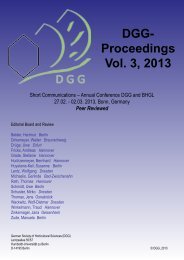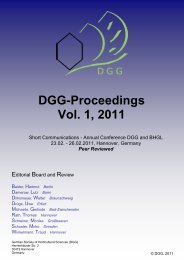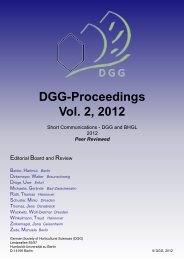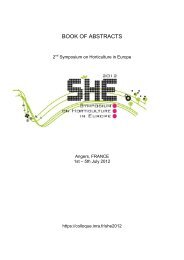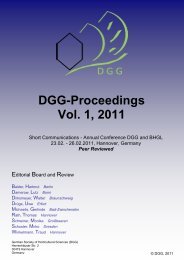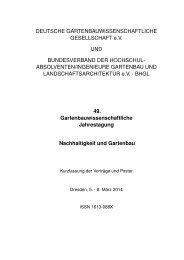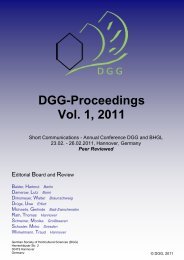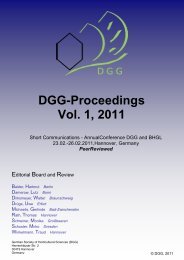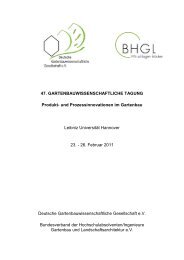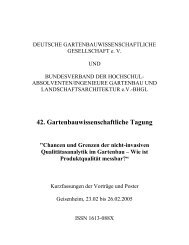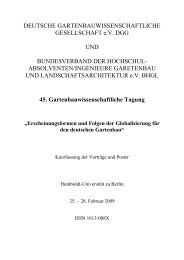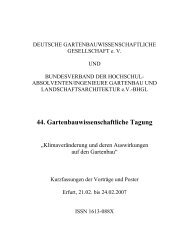43. Gartenbauwissenschaftliche Tagung - (DGG) und des
43. Gartenbauwissenschaftliche Tagung - (DGG) und des
43. Gartenbauwissenschaftliche Tagung - (DGG) und des
Sie wollen auch ein ePaper? Erhöhen Sie die Reichweite Ihrer Titel.
YUMPU macht aus Druck-PDFs automatisch weboptimierte ePaper, die Google liebt.
156<br />
Obstbau<br />
Adaptation of leaf anatomy in enset (Ensete ventricosum)<br />
to climate and variations within landraces<br />
K. Zippel and P. Lüdders<br />
Arbeitsgruppe Obstbau, Institut für Gartenbauwissenschaften,<br />
Landwirtschaftlich-Gärtnerische Fakultät<br />
Humboldt-Universität zu Berlin; Albrecht-Thaer-Weg 3; 14195 Berlin<br />
kzippel@gmx.net<br />
Enset (Ensete ventricosum: Musaceae) shows remarkable adaptation to seasonal climates in<br />
its leaf anatomy. It grows wild in Africa with an altitudinal distribution between 800 m (Angola)<br />
and 2000 m (Eastern Africa), and an average rainfall between 1000 and 1500 mm. Main<br />
cultivation areas are restricted to southern and south-western Ethiopia at 1300 to 3300 meters<br />
in semi-arid to subhumid regions. Farmers cultivate numerous landraces for manifold purposes,<br />
as well as for different requirements of site and climate.<br />
On first sight different landraces vary in their development, and therefore might vary in their<br />
anatomy and their physiology. Field experiments were carried out on leaf anatomy, namely<br />
stomata number, size and distribution, and leaf transverse section. Vegetative propagated<br />
sprouts of 10 landraces and 1 wild type were investigated at two sites in Ethiopia (Debre Zeit,<br />
1850 m, and Addis Ababa, 2350 m). The experiments started in August 1998 and did last until<br />
June 1999. Average temperature and rainfall patterns varied throughout the seasons<br />
(17.1°C, 2805 hours of sunshine, 858.4 mm rainfall in 96.6 days at 1850 m; 16.1°C, 2576<br />
hours, 1127.4 mm in 169.9 days at 2350 m).<br />
Enset shows differences in stomata number, shape and distribution, as well as in the transverse<br />
sections of the leaves. These results are observed as a response to temperature and annual<br />
precipitation patterns <strong>und</strong>er different climatic conditions, and regarding different landraces.<br />
The influence of radiation needs further investigation to evaluate its role in leaf anatomy.<br />
Results allow grouping of landraces into three groups (tropical, subtropical and intermediate).<br />
Anatomical adaptations of the leaves include succulent properties that allow cultivation<br />
on semi-arid conditions and are one explanation of the wide distribution of enset cultivation in<br />
southern and south-western Ethiopia among different climates and altitu<strong>des</strong>.<br />
BHGL – <strong>Tagung</strong>sband 24/2006



